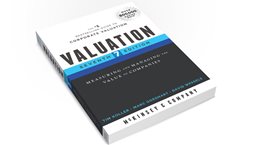Your business, like every business, is deeply intertwined with environmental, social, and governance (ESG) concerns. It makes sense, therefore, that a strong ESG proposition can create value—and in this article, we provide a framework for understanding the five key ways it can do so. But first, let’s briefly consider the individual elements of ESG:
- The E in ESG, environmental criteria, includes the energy your company takes in and the waste it discharges, the resources it needs, and the consequences for living beings as a result. Not least, E encompasses carbon emissions and climate change. Every company uses energy and resources; every company affects, and is affected by, the environment.
- S, social criteria, addresses the relationships your company has and the reputation it fosters with people and institutions in the communities where you do business. S includes labor relations and diversity and inclusion. Every company operates within a broader, diverse society.
- G, governance, is the internal system of practices, controls, and procedures your company adopts in order to govern itself, make effective decisions, comply with the law, and meet the needs of external stakeholders. Every company, which is itself a legal creation, requires governance.
Just as ESG is an inextricable part of how you do business, its individual elements are themselves intertwined. For example, social criteria overlaps with environmental criteria and governance when companies seek to comply with environmental laws and broader concerns about sustainability. Our focus is mostly on environmental and social criteria, but, as every leader knows, governance can never be hermetically separate. Indeed, excelling in governance calls for mastering not just the letter of laws but also their spirit—such as getting in front of violations before they occur, or ensuring transparency and dialogue with regulators instead of formalistically submitting a report and letting the results speak for themselves.
Thinking and acting on ESG in a proactive way has lately become even more pressing. The US Business Roundtable released a new statement in August 2019 strongly affirming business’s commitment to a broad range of stakeholders, including customers, employees, suppliers, communities, and, of course, shareholders.1 Of a piece with that emerging zeitgeist, ESG-oriented investing has experienced a meteoric rise. Global sustainable investment now tops $30 trillion—up 68 percent since 2014 and tenfold since 2004.2 The acceleration has been driven by heightened social, governmental, and consumer attention on the broader impact of corporations, as well as by the investors and executives who realize that a strong ESG proposition can safeguard a company’s long-term success. The magnitude of investment flow suggests that ESG is much more than a fad or a feel-good exercise.
So does the level of business performance. The overwhelming weight of accumulated research finds that companies that pay attention to environmental, social, and governance concerns do not experience a drag on value creation—in fact, quite the opposite (Exhibit 1). A strong ESG proposition correlates with higher equity returns, from both a tilt and momentum perspective.3 Better performance in ESG also corresponds with a reduction in downside risk, as evidenced, among other ways, by lower loan and credit default swap spreads and higher credit ratings.4

But even as the case for a strong ESG proposition becomes more compelling, an understanding of why these criteria link to value creation is less comprehensive. How exactly does a strong ESG proposition make financial sense? From our experience and research, ESG links to cash flow in five important ways: (1) facilitating top-line growth, (2) reducing costs, (3) minimizing regulatory and legal interventions, (4) increasing employee productivity, and (5) optimizing investment and capital expenditures (Exhibit 2). Each of these five levers should be part of a leader’s mental checklist when approaching ESG opportunities—and so should be an understanding of the “softer,” more personal dynamics needed for the levers to accomplish their heaviest lifting.

Five links to value creation
The five links are a way to think of ESG systematically, not an assurance that each link will apply, or apply to the same degree, in every instance. Some are more likely to arise in certain industries or sectors; others will be more frequent in given geographies. Still, all five should be considered regardless of a company’s business model or location. The potential for value creation is too great to leave any of them unexplored.
1. Top-line growth
A strong ESG proposition helps companies tap new markets and expand into existing ones. When governing authorities trust corporate actors, they are more likely to award them the access, approvals, and licenses that afford fresh opportunities for growth. For example, in a recent, massive public–private infrastructure project in Long Beach, California, the for-profit companies selected to participate were screened based on their prior performance in sustainability. Superior ESG execution has demonstrably paid off in mining, as well. Consider gold, a commodity (albeit an expensive one) that should, all else being equal, generate the same rents for the companies that mine it regardless of their ESG propositions. Yet one major study found that companies with social-engagement activities that were perceived to be beneficial by public and social stakeholders had an easier go at extracting those resources, without extensive planning or operational delays. These companies achieved demonstrably higher valuations than competitors with lower social capital.5
ESG can also drive consumer preference. McKinsey research has shown that customers say they are willing to pay to “go green.” Although there can be wide discrepancies in practice, including customers who refuse to pay even 1 percent more, we’ve found that upward of 70 percent of consumers surveyed on purchases in multiple industries, including the automotive, building, electronics, and packaging categories, said they would pay an additional 5 percent for a green product if it met the same performance standards as a nongreen alternative. In another study, nearly half (44 percent) of the companies we surveyed identified business and growth opportunities as the impetus for starting their sustainability programs.
The payoffs are real. When Unilever developed Sunlight, a brand of dishwashing liquid that used much less water than its other brands, sales of Sunlight and Unilever’s other water-saving products proceeded to outpace category growth by more than 20 percent in a number of water-scarce markets. And Finland’s Neste, founded as a traditional petroleum-refining company more than 70 years ago, now generates more than two-thirds of its profits from renewable fuels and sustainability-related products.

Valuation: Measuring and Managing the Value of Companies. The new 7th edition.
2. Cost reductions
ESG can also reduce costs substantially. Among other advantages, executing ESG effectively can help combat rising operating expenses (such as raw-material costs and the true cost of water or carbon), which McKinsey research has found can affect operating profits by as much as 60 percent. In the same report, our colleagues created a metric (the amount of energy, water, and waste used in relation to revenue) to analyze the relative resource efficiency of companies within various sectors and found a significant correlation between resource efficiency and financial performance. The study also identified a number of companies across sectors that did particularly well—precisely the companies that had taken their sustainability strategies the furthest.
As with each of the five links to ESG value creation, the first step to realizing value begins with recognizing the opportunity. Consider 3M, which has long understood that being proactive about environmental risk can be a source of competitive advantage. The company has saved $2.2 billion since introducing its “pollution prevention pays” (3Ps) program, in 1975, preventing pollution up front by reformulating products, improving manufacturing processes, redesigning equipment, and recycling and reusing waste from production. Another enterprise, a major water utility, achieved cost savings of almost $180 million per year thanks to lean initiatives aimed at improving preventive maintenance, refining spare-part inventory management, and tackling energy consumption and recovery from sludge. FedEx, for its part, aims to convert its entire 35,000-vehicle fleet to electric or hybrid engines; to date, 20 percent have been converted, which has already reduced fuel consumption by more than 50 million gallons.6
3. Reduced regulatory and legal interventions
A stronger external-value proposition can enable companies to achieve greater strategic freedom, easing regulatory pressure. In fact, in case after case across sectors and geographies, we’ve seen that strength in ESG helps reduce companies’ risk of adverse government action. It can also engender government support.
The value at stake may be higher than you think. By our analysis, typically one-third of corporate profits are at risk from state intervention. Regulation’s impact, of course, varies by industry. For pharmaceuticals and healthcare, the profits at stake are about 25 to 30 percent. In banking, where provisions on capital requirements, “too big to fail,” and consumer protection are so critical, the value at stake is typically 50 to 60 percent. For the automotive, aerospace and defense, and tech sectors, where government subsidies (among other forms of intervention) are prevalent, the value at stake can reach 60 percent as well (Exhibit 3).

4. Employee productivity uplift
A strong ESG proposition can help companies attract and retain quality employees, enhance employee motivation by instilling a sense of purpose, and increase productivity overall. Employee satisfaction is positively correlated with shareholder returns.7 For example, the London Business School’s Alex Edmans found that the companies that made Fortune’s “100 Best Companies to Work For” list generated 2.3 percent to 3.8 percent higher stock returns per year than their peers over a greater than 25-year horizon.8 Moreover, it’s long been observed that employees with a sense not just of satisfaction but also of connection perform better. The stronger an employee’s perception of impact on the beneficiaries of their work, the greater the employee’s motivation to act in a “prosocial” way.9
Recent studies have also shown that positive social impact correlates with higher job satisfaction, and field experiments suggest that when companies “give back,” employees react with enthusiasm. For instance, randomly selected employees at one Australian bank who received bonuses in the form of company payments to local charities reported greater and more immediate job satisfaction than their colleagues who were not selected for the donation program.10
Just as a sense of higher purpose can inspire your employees to perform better, a weaker ESG proposition can drag productivity down. The most glaring examples are strikes, worker slowdowns, and other labor actions within your organization. But it’s worth remembering that productivity constraints can also manifest outside of your company’s four walls, across the supply chain. Primary suppliers often subcontract portions of large orders to other firms or rely on purchasing agents, and subcontractors are typically managed loosely, sometimes with little oversight of workers’ health and safety.
Farsighted companies pay heed. Consider General Mills, which works to ensure that its ESG principles apply “from farm to fork to landfill.” Walmart, for its part, tracks the work conditions of its suppliers, including those with extensive factory floors in China, according to a proprietary company scorecard. And Mars seeks opportunities where it can deliver what it calls “wins-wins-wins” for the company, its suppliers, and the environment. Mars has developed model farms that not only introduce new technological initiatives to farmers in its supply chains, but also increase farmers’ access to capital so that they are able to obtain a financial stake in those initiatives.11
5. Investment and asset optimization
A strong ESG proposition can enhance investment returns by allocating capital to more promising and more sustainable opportunities (for example, renewables, waste reduction, and scrubbers). It can also help companies avoid stranded investments that may not pay off because of longer-term environmental issues (such as massive write-downs in the value of oil tankers). Remember, taking proper account of investment returns requires that you start from the proper baseline. When it comes to ESG, it’s important to bear in mind that a do-nothing approach is usually an eroding line, not a straight line. Continuing to rely on energy-hungry plants and equipment, for example, can drain cash going forward. While the investments required to update your operations may be substantial, choosing to wait it out can be the most expensive option of all. The rules of the game are shifting: regulatory responses to emissions will likely affect energy costs and could especially affect balance sheets in carbon-intense industries. And bans or limitations on such things as single-use plastics or diesel-fueled cars in city centers will introduce new constraints on multiple businesses, many of which could find themselves having to catch up. One way to get ahead of the future curve is to consider repurposing assets right now—for instance, converting failing parking garages into uses with higher demand, such as residences or day-care facilities, a trend we’re beginning to see in reviving cities.
Foresight flows to the bottom line, and leaning into the tailwinds of sustainability presents new opportunities to enhance investment returns. Tailwinds blow strongly in China, for example. The country’s imperative to combat air pollution is forecast to create more than $3 trillion in investment opportunities through 2030, ranging across industries from air-quality monitoring to indoor air purification and even cement mixing.
The personal dynamic
The five links to value creation are grounded in hard numbers, but, as always, a softer side is in play. For leaders seeking out new ESG opportunities or trying to nudge an organization in directions that may feel orthogonal to its traditional business model, here are a few personal points to keep in mind.
Get specific
It’s important to understand the multiple ways that environmental, social, and governmental factors can create value, but when it comes to inspiring those around you, what will you really be talking about? Surprisingly, that depends. The individual causes that may inspire any one of us are precisely that—individual. That means that the issues most important to executives on your team could incline in different directions. Large companies can have dozens of social, community, or environmental projects in motion at any time. Too many at once can be a muddle; some may even work at cross-purposes.
In our experience, priority initiatives should be clearly articulated, and the number should be no more than five. To decide on which ones and to get the most out of them, let the company be your lodestar. For one leading agribusiness, that means channeling its capabilities into ameliorating hunger. The company taps its well-honed competencies to work with farmers in emerging regions to diversify their crops and adopt new technologies, which increases production and strengthens the company’s ties with different countries and communities.
Even within the same industry, different companies will have different ESG profiles depending on their position in the corporate life cycle. Attackers typically have high upside potential to drive growth from ESG initiatives (for instance, the craft brewer BrewDog donates 20 percent of its annual profits), while longer-established competitors simply don’t have that choice. For some companies, such as coal businesses or tobacco manufacturers, ESG will be more effectively geared to maintaining community ties and prioritizing risk avoidance. Regardless of your company’s circumstances, it will be the CEO’s role to rally support around the initiatives that best map to its mission.
Get practical
Value creation should be the CEO’s core message. Anything else could sound off-key. Managers, especially more senior ones, are usually assessed based on performance targets. Under those conditions, top-down ESG pronouncements can seem distracting or too vague to be of much use; “save the planet” won’t cut it. To get everyone on board, make the case that your company’s ESG priorities do link to value, and show leaders how, ideally with hard metrics that feed into the business model (for example, output per baseline electricity use, waste cost in a given plant or location per employee, or revenue per calorie for a food-and-beverage business).

‘Don’t be the villain’: Niall Ferguson looks forward and back at capitalism in crisis
The case will be simpler if you’ve done the hard work to analyze what matters along your value chain, where the greatest potential lies, and which areas have the most impact for your company. Proactive companies carefully research potential initiatives, including by tapping thought leaders and industry experts, iterate their findings with internal and external stakeholders, and then publish the results. Making the case publicly—not least to investors—enforces rigor and helps ensure that practical actions will follow.
Get real
An honest appraisal of ESG includes a frank acknowledgment that getting it wrong can result in massive value destruction. Being perceived as “overdoing it” can sap a leader’s time and focus. Underdoing it is even worse. Companies that perform poorly in environmental, social, and governance criteria are more likely to endure materially adverse events. Just in the past few years, multiple companies with a weak ESG proposition saw double-digit declines in market capitalization in the days and weeks after their missteps came to light.12 Leaders should vigilantly assess the value at stake from external engagement (in our experience, poor external engagement can typically destroy about 30 percent of value) and plan scenarios for potential hits to operating profits. These days, the tail events can seem to come out of nowhere, even from a single tweet. Playing fast and loose with ESG is playing to lose, and failure to confront downside risk forthrightly can be disastrous.
Conversely, being thoughtful and transparent about ESG risk enhances long-term value—even if doing so can feel uncomfortable and engender some short-term pain. Ed Stack, the CEO of North American retailer Dick’s Sporting Goods, said he expected that the company’s 2018 announcement to restrict gun sales would alienate some customers, and he was right: by his own estimate, the announcement cost the company $150 million in lost sales, or slightly less than 2 percent of yearly revenue. Yet the company’s stock climbed 14 percent in a little over a year following the shift.
One reason for the resilience of Dick’s Sporting Goods may be that gun sales were already a declining part of the company’s portfolio. Another reason was that it remained stubbornly committed to its sense of purpose. Researchers have found that the market capitalization of firms increases with stakeholder support, particularly in times when peer stakeholders criticize or attack firm operations.13 Holding to your company’s central values is particularly essential today as polarized forces widen the social gyre. “Fueled in part by social media, public pressures on corporations build faster and reach further than ever before,” BlackRock’s Larry Fink observed in his highly influential 2019 letter to CEOs. Fink argued that “[a]s divisions continue to deepen, companies must demonstrate their commitment to the countries, regions, and communities where they operate.” Walking the talk on purpose strengthens the company and its community. “Profits,” Fink notably concluded, “are in no way inconsistent with purpose—in fact, profits and purpose are inextricably linked.” (For more about foundational perspectives, see sidebar, “ESG for the long term.”)
The linkage from ESG to value creation is solid indeed. Five levers in particular, across the bottom and top lines, can be difference makers. In a world where environmental, social, and governmental concerns are becoming more urgent than ever, leaders should keep those connections in mind.


